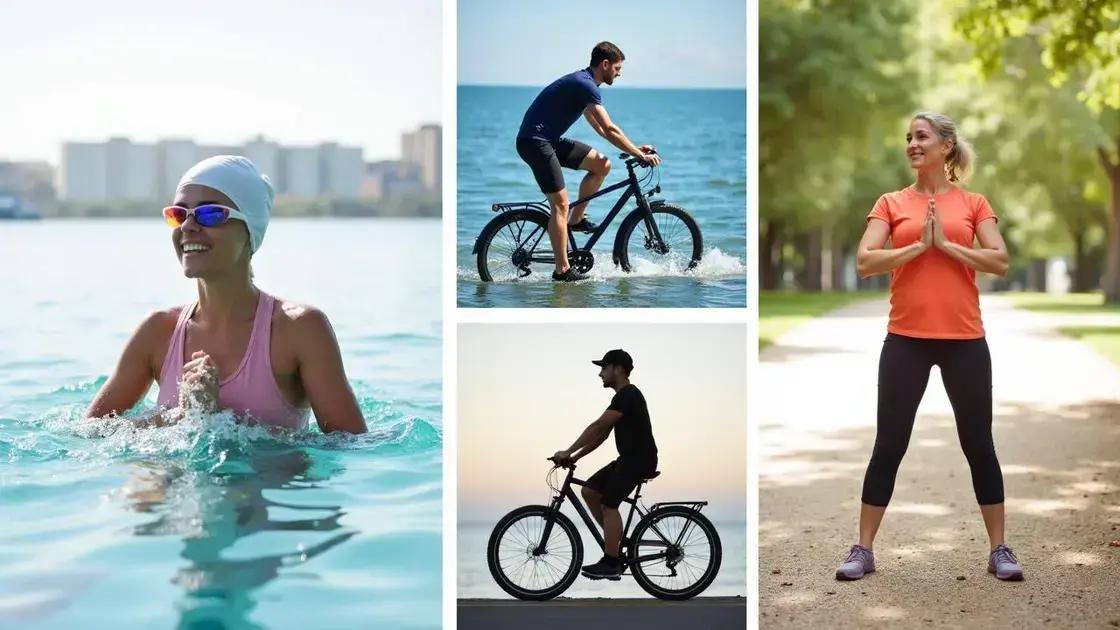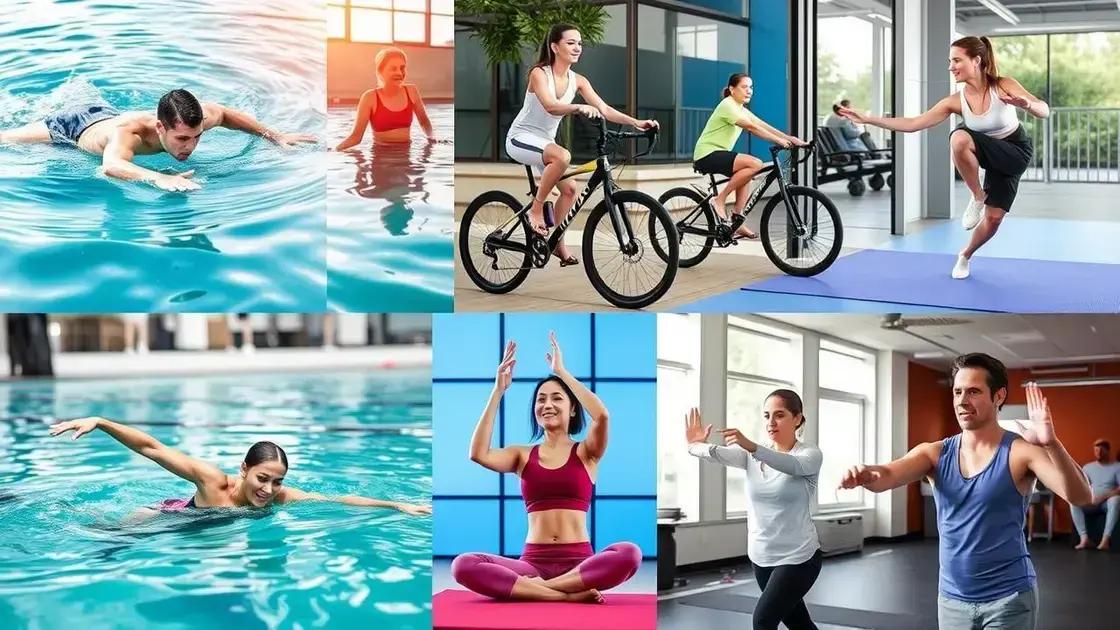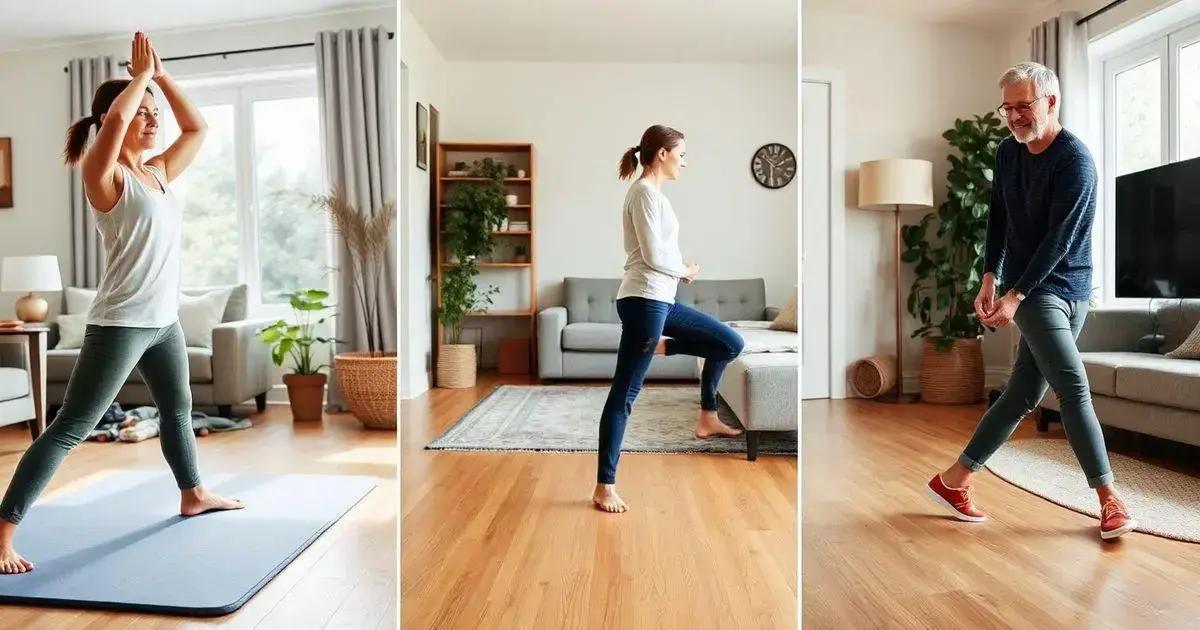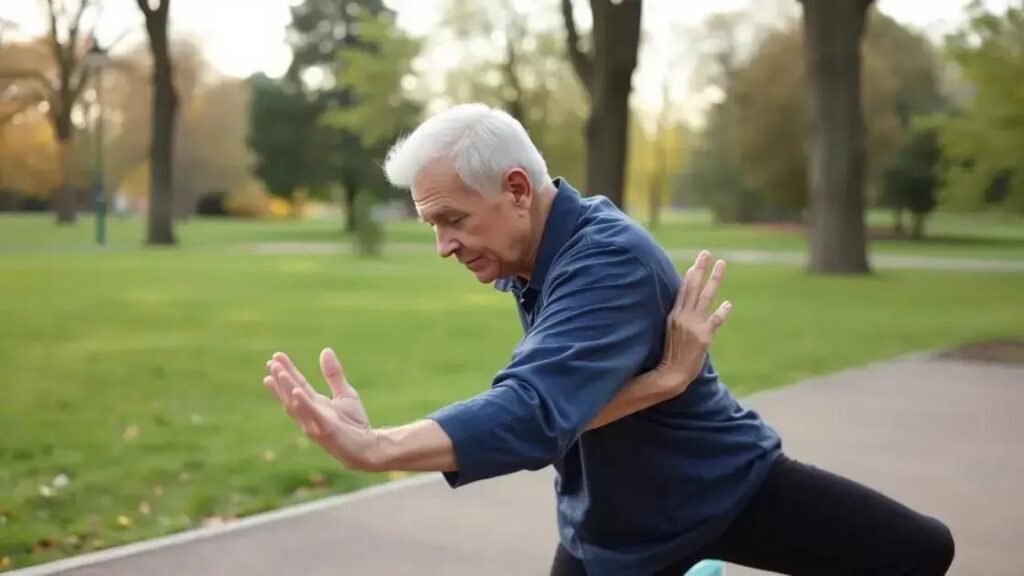To strengthen joints with low-impact movements, engage in exercises like swimming, cycling, and yoga that enhance flexibility and muscle support while minimizing stress on joints. Incorporate these activities regularly, maintain a balanced diet, stay hydrated, and consider maintaining a healthy weight for optimal joint health as you age.
Strengthening joints is crucial for maintaining mobility and reducing discomfort as we age. Many people wonder about effective ways to achieve this without putting too much stress on their bodies. Low-impact movements offer a gentle approach that can enhance joint health and flexibility. In this article, you will discover the benefits of low-impact exercises, explore the best activities for joint strength, and learn practical tips for making these movements part of your daily routine.
Benefits of Low-Impact Movements for Joint Health

Low-impact movements offer a variety of benefits for joint health, making them ideal for people of all ages. These movements are gentle yet effective, helping to strengthen muscles around the joints, which provides better support and stability.
One of the key benefits of low-impact movements is that they help to reduce the risk of injury. High-impact exercises can put stress on joints, leading to wear and tear over time. In contrast, activities like swimming, cycling, and walking are kinder to the joints, allowing you to stay active without excessive risk.
Improved flexibility is another significant advantage. Low-impact exercises promote a greater range of motion, helping to keep the joints flexible and reducing stiffness. This is especially important for older adults or individuals recovering from injuries.
Additionally, low-impact movements often enhance circulation, leading to better blood flow. This increased circulation helps with the delivery of nutrients to the joints and can aid in recovery from injuries.
Lastly, participating in low-impact activities can also improve overall well-being. Engaging in regular exercise has mental health benefits, helping to reduce stress and anxiety. This combination of physical and mental health improvements contributes to a better quality of life.
Best Low-Impact Exercises for Strengthening Joints

There are many great low-impact exercises that can help strengthen your joints. These exercises are gentle and can be done by people of all fitness levels.
1. Swimming: Swimming is a fantastic full-body workout. The buoyancy of the water supports your body, reducing stress on your joints. It’s a great way to improve strength and flexibility.
2. Cycling: Whether on a stationary bike or cycling outside, this activity is excellent for joint health. It promotes leg strength without putting too much pressure on your knees and hips.
3. Yoga: Yoga focuses on stretching and strengthening muscles slowly. There are many poses specifically designed to improve joint mobility and stability. Start with gentle styles like Hatha or Yin yoga.
4. Elliptical Trainer: Using an elliptical machine mimics running but with less impact. This exercise is easy on your joints while still providing a cardiovascular workout.
5. Tai Chi: Known for its slow, fluid movements, Tai Chi enhances balance and flexibility. It is suitable for all ages and helps reduce joint pain.
6. Walking: A simple yet effective exercise. Walking strengthens your legs and helps maintain joint function. Aim for moderate-paced walks to get the best benefits.
These low-impact exercises can be easily incorporated into your routine, creating a balanced approach to joint health and overall fitness.
How to Incorporate Low-Impact Movements into Your Routine

Incorporating low-impact movements into your daily routine is easier than you might think. Here are some simple tips to get started:
1. Start Small: Begin by adding short sessions of low-impact exercises to your daily life. Even 10-15 minutes of walking or gentle stretching can make a big difference.
2. Set a Schedule: Allocate specific times during the week for low-impact activities. Treat these like appointments to help ensure you stick to your plan.
3. Combine Activities: Try integrating low-impact exercises into activities you already do. For example, you can do calf raises while brushing your teeth or practice stretching while watching TV.
4. Find a Buddy: Exercising with a friend or family member can make low-impact movements more enjoyable. It also helps keep you accountable.
5. Use Online Resources: There are many online videos and apps that offer guided low-impact exercise sessions. Choose ones that fit your fitness level and preferences.
6. Listen to Your Body: Pay attention to how your body responds. Low-impact movements should make you feel good and improve your strength without causing pain.
7. Make it Fun: Choose activities you enjoy, whether it’s dancing, tai chi, or swimming. When you enjoy what you’re doing, it’s easier to stick with it.
By following these tips, you can easily create a routine that incorporates low-impact movements into your everyday life, contributing to better joint health and overall fitness.
Tips for Maintaining Joint Health as You Age

Maintaining joint health as you age is critical for staying active and enjoying life. Here are some helpful tips to keep your joints healthy:
1. Stay Active: Regular physical activity is essential. Engage in low-impact exercises like walking, swimming, or cycling to keep your joints functioning well.
2. Eat a Balanced Diet: Focus on a diet rich in fruits, vegetables, whole grains, and lean proteins. Foods high in omega-3 fatty acids, such as salmon and walnuts, can help reduce inflammation.
3. Maintain a Healthy Weight: Carrying excess weight puts extra stress on your joints, especially on your knees and hips. Achieving and maintaining a healthy weight can enhance joint longevity.
4. Stay Hydrated: Drink plenty of water throughout the day, as it is vital for joint lubrication. Staying hydrated helps maintain optimal joint function.
5. Use Proper Techniques: When lifting or exercising, use proper techniques to reduce injury risk. Pay attention to your posture and engage your core to protect your joints.
6. Consider Supplements: Talk to your healthcare provider about supplements that may help joint health, such as glucosamine and chondroitin. Always consult before starting any new supplement.
7. Get Regular Check-Ups: Regular visits to your doctor can help monitor your joint health. Early detection of joint issues can lead to better management and outcomes.
By following these tips, you can support your joint health as you age and enjoy a more active and fulfilling lifestyle.
In Summary: Strengthening Joints with Low-Impact Movements
Strengthening your joints doesn’t have to be difficult or stressful. By incorporating low-impact movements into your routine, you can enhance your joint health while minimizing the risk of injury. Regular exercise, a balanced diet, and maintaining a healthy weight are essential steps in this journey.
Remember to choose activities that you enjoy, and make sure to listen to your body. As you adopt these habits, you’ll not only improve your joint health but also enrich your overall well-being.
With these easy tips and strategies, you are on your way to enjoying a more active and fulfilling life, no matter your age. Take the time to prioritize your joints and make the most of every movement!
FAQ – Frequently Asked Questions about Strengthening Joints with Low-Impact Movements
What are low-impact movements?
Low-impact movements are exercises that are gentle on the joints, such as swimming, cycling, yoga, and walking.
How do low-impact exercises benefit joint health?
Low-impact exercises help strengthen the muscles around the joints, improve flexibility, and reduce the risk of injury and joint pain.
Can anyone do low-impact exercises?
Yes, low-impact exercises are suitable for people of all ages and fitness levels, making them accessible options for everyone.
How often should I do low-impact exercises?
Aim for at least 150 minutes of moderate-intensity low-impact exercise each week, along with flexibility and strength training.
What are some examples of low-impact exercises I can try?
Examples include swimming, cycling, walking, yoga, tai chi, and using an elliptical machine.
How can I incorporate low-impact movements into my daily routine?
Start small by adding short sessions throughout your day, schedule specific times for workouts, or integrate exercises into daily activities.












